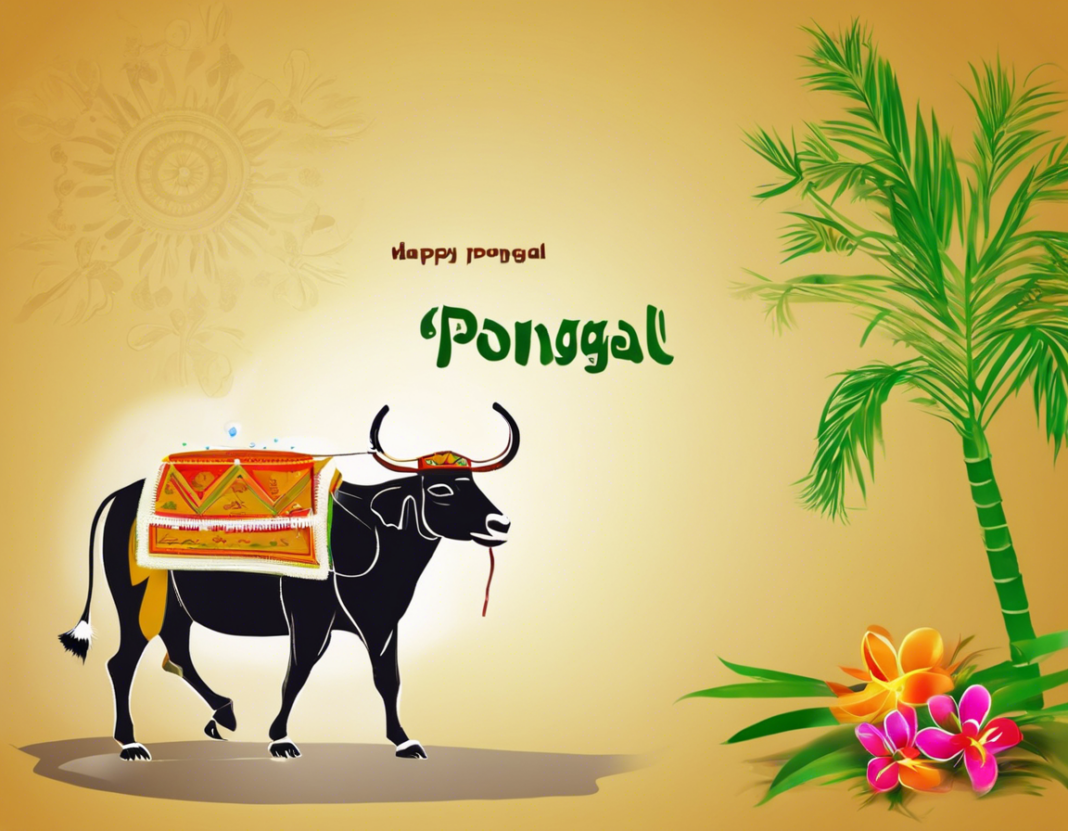Pongal Festival 2024: Embracing Joy and Traditions
As the new year begins, it’s time for the people of Tamil Nadu and other South Indian states to celebrate Pongal, a festival that signifies the harvest season and the worship of the sun god. Pongal, also known as the Thai Pongal, is a four-day festival that holds immense cultural and traditional significance for the Tamil community.
The Significance of Pongal
Pongal is a popular festival celebrated with great zeal and enthusiasm by Tamilians around the world. The name ‘Pongal’ is derived from the Tamil word “Pongudhal,” which means “to boil.” The festival marks the end of the winter solstice and the beginning of the auspicious Uttarayan period, which is considered highly favorable for new beginnings and ventures.
Day 1: Bhogi Pongal
The first day of Pongal is known as Bhogi Pongal, which is dedicated to the lord Indra – the god of rain. On this day, people clean and decorate their homes, discard old belongings, and light a bonfire to burn away negativity and welcome positive vibes.
Day 2: Thai Pongal
Thai Pongal, the second day of the festival, is the most important day when the traditional Pongal dish is prepared. This sweet dish is made from freshly harvested rice, jaggery, milk, and other ingredients, and is boiled in a clay pot until it overflows as a symbol of abundance and prosperity.
Day 3: Mattu Pongal
Mattu Pongal is dedicated to cattle, as cows and bulls hold a sacred place in Indian agriculture and culture. Cattle are washed, decorated with flowers and bells, and worshipped on this day as a token of gratitude for their contribution to farming activities.
Day 4: Kaanum Pongal
Kaanum Pongal, the final day of the festival, is a day for family gatherings and outings. People visit relatives, exchange gifts, and enjoy various cultural activities like sugarcane chewing, traditional games, and folk dance performances.
Traditions and Customs
Apart from the traditional rituals and festivities, Pongal also involves various customs that have been followed for generations:
Rangoli: Women create colorful rangoli designs at the entrance of their homes to welcome prosperity and good luck.
Sugarcane: Sugarcane plays a vital role in Pongal celebrations. It is considered auspicious and symbolizes sweetness and happiness.
Pongal Pot: The cooking of the Pongal dish in a new clay pot is a significant ritual that symbolizes the renewal of ties and bonds.
Decorations: Homes are decorated with mango leaves, banana leaves, and kolam (rice flour designs) to enhance the festive spirit.
Songs and Dances: Folk songs and traditional dances are performed to celebrate the harvest season and express gratitude to nature.
FAQs about Pongal Festival
- What is the main significance of Pongal festival?
-
Pongal festival signifies the harvest season, gratitude towards nature, and the worship of the sun god for a prosperous agricultural year.
-
Why is Pongal celebrated for four days?
-
Pongal is celebrated for four days to mark different aspects of the harvest festival, including cleaning and discarding old things, preparing Pongal dish, honoring cattle, and spending time with family.
-
What is the traditional attire worn during Pongal celebrations?
-
Women usually wear traditional sarees like Madisar or Pattu Pavadai, while men opt for dhoti and shirt or veshti and angavastram.
-
Are there any regional variations in Pongal celebrations?
-
Yes, different regions in South India may have variations in rituals, dishes prepared, and customs followed during Pongal. However, the essence of the festival remains the same.
-
Can non-Tamil people participate in Pongal celebrations?
-
Absolutely! Pongal is a festival that welcomes people from all communities to partake in the joyous celebrations, savor the traditional dishes, and experience the rich culture of South India.
-
Is Pongal only celebrated in India?
-
While Pongal is predominantly celebrated in India, it is also observed by Tamil communities around the world, including countries like Sri Lanka, Malaysia, Singapore, and Mauritius.
-
What role do colors play in Pongal celebrations?
-
Colors hold symbolic significance during Pongal, with each color representing various aspects such as prosperity (yellow), purity (white), and fertility (red).
-
How can one wish others during Pongal?
-
Traditional greetings like “Pongalo Pongal” or “Wishing you a Happy Pongal filled with joy and prosperity” can be shared with friends and family during the festival.
-
What are some common gifts exchanged during Pongal?
-
Popular gifts during Pongal include clothes, sweets, fruits, sugarcane, traditional accessories, and home decor items to convey blessings and good wishes.
-
Is Pongal a religious festival or a cultural celebration?
- Pongal can be viewed as a blend of both religious and cultural elements as it involves rituals to honor deities and ancestors, alongside celebrating the bountiful harvest season through cultural activities and traditional practices.
Embrace the spirit of joy and togetherness this Pongal as you join in the festive fervor, savor the traditional delicacies, and bask in the warmth of family bonds and traditions. May the essence of Pongal enrich your life with happiness, prosperity, and harmony throughout the year ahead.
